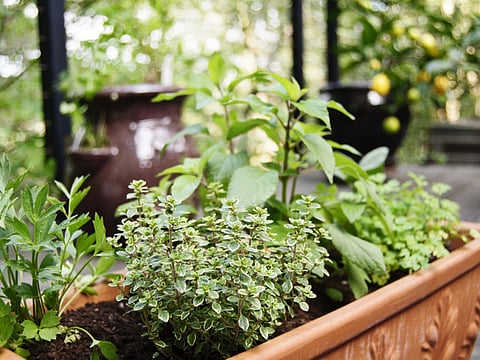Top 5 ways to make your UAE home sustainable
Quick, effective ways to reduce environmental damage in your daily life

Dubai: Talk about sustainability made headlines this week after Dubai announced a number of initiatives to reduce its carbon footprint by 2020 through using clean technology.
During the World Government Summit, the Dubai Electricity and Water Authority (Dewa) confirmed that it will launch a tender within six weeks to build the third phase of the Shaikh Mohammad Bin Rashid Al Maktoum Solar Park.
The Roads and Transport Authority also revealed that it is currently testing out solar powered boats to replace traditional abras, in a bid to reduce the carbon footprint produced from public transport operations.
But while authorities are planning out their projects worth millions of dirhams, is it possible for residents to also partake in the challenge without burdening their pockets?
With the city’s outskirts surrounded by a desert, it may not be one of the greenest places to live in – but that shouldn’t stop you from going green.
Greener homes
Moawya Abdul Rahman, head of structural engineering unit at Dubai Municipality, said that they are working in tandem with Dewa to encourage a practise of green sustainability among residential areas.
“When acquiring building permits, developers have to show the municipality that their buildings are environmentally friendly," he said.
"There are many requirements for a green building but the key factors we look for are in the building’s services and structural systems, such as heat insulation, energy and water supply, as well as drainage works,” he added.
Dubai aims to have half the buildings classified as green in the next 10 years, with 25 square metres of green space per person, targetting to become the city with the smallest carbon footprint in the world by 2050.
In addition, the emirate’s strategic plan aims to have seven per cent of power generation from renewables by 2020 and 15 per cent by 2030.
“Switching to LED lights, recycling and reducing water consumption are just a few ways for residents to reduce their carbon footprint. But there are more ways to improve the performance of your home,” he said.
How to achieve a sustainable home: 5 top tips
1. Grow your own veggies
Whether you live in a villa or an apartment, there are some vegetables and herbs that are surprisingly easy to grow here.
If you don’t have a garden, a flower pot will also do. In no time, you can have your own parsley, coriander, cucumbers and even potatoes.
2. Buy efficient appliances
Check efficiency ratings of appliances to save water and energy, like front-loading washers (they use half the water and detergent of top-loading washers)
3. Install faucet aerators
Faucet aerators is a simple way to cut down on water usage and conserve the environment at very little cost. Most aerators are marked with the amount of water they allow to pass through.
4. Switch to non-toxic cleaners and detergents
When shopping, look for words like “organic,” “biodegradable” and “environmentally friendly” on the labels
5. Bring the outdoors in
According to the Journal of American Society of Horticultural Science, potted plants can eliminate or reduce ozone concentrations.
Sign up for the Daily Briefing
Get the latest news and updates straight to your inbox


